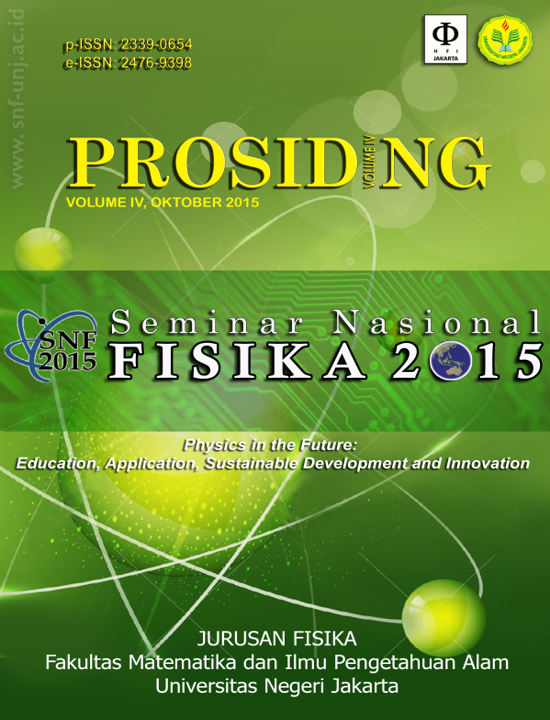Analisis Difraksi Nanopartikel Fe3O4 Metode Kopresipitasi Dengan Polietilen Glikol 6000
Abstract
This study aimed to obtain a particle size-based nano Fe3O4 iron sand, determine the effect of Polyethylene Glycol (PEG) -6000 with a ratio of 1: 3.1: 4,1,5 and without PEG against Fe3O4.Nanopartikel Fe3O4 nano particle size produced from iron sand which in synthetic by using coprecipitation method. Synthetic done by mixing natural sand with HCl as solvent and NH4OH as a precipitant, as templates are added PEG-6000 .Then, characterized by using X-Ray Diffractometer (XRD) to determine the crystal size and content of the phase.
From the test results of X-Ray Diffractometer (XRD) to Fe3O4 without template PEG-6000 showed 29.08 nm crystal size, while Fe3O4 with the addition of PEG-6000 with a ratio of 1: 3; 1: 4; 1: 5 is: 14.90 nm; 22:16 nm; 33.11nm, the volume fraction of magnetite (Fe3O4) without PEG = 38.47%, with PEG 1: 3 = 48.39%; 1: 4 44.41%; 1: 5 = 53.20%
Keywords: Nanoparticles Fe3O4, Polyethylene Glycol (PEG) -6000, Coprecipitation.





